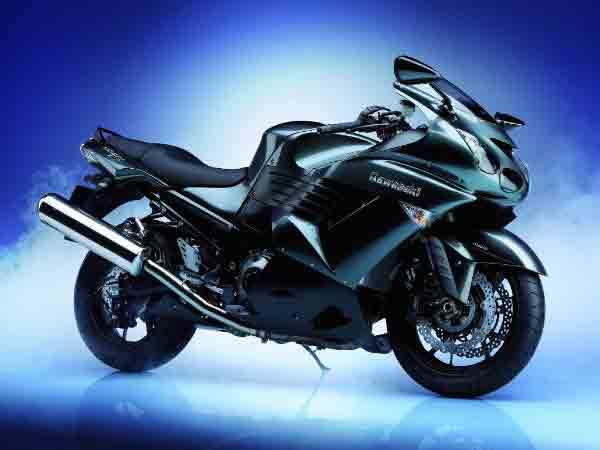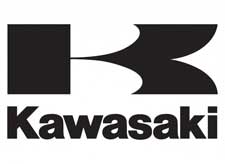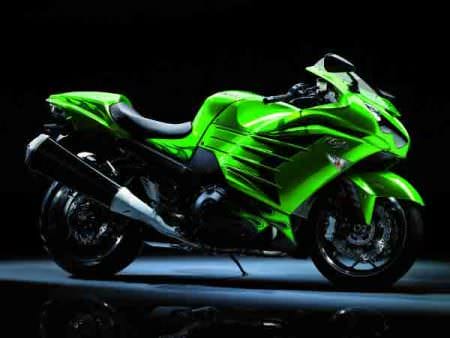

FOOTHILL RANCH, Calif. –-(Ammoland.com)- Audaciousness. It must be in our blood, because in every decade for 50 years, Kawasaki has blasted the powersports industry wide open with a new kind of product that, to borrow from a certain famous TV series, “boldly goes where no man (or woman!) has gone before.” In 1969 it was the radical three-cylinder, two-stroke H1 500 Mach III motorcycle. In the 1970s came the all-conquering 903cc Z1 and the original stand-up JET SKI watercraft. During the 1980s it was the game-changing GPz900R Ninja motorcycle and the MULE 1000 side-by-side. In the 1990s arrived the astonishing Ninja ZX-11, and today it’s the supercharged Ninja H2 and Ninja H2R superbikes. But what happened in the 2000s, during the reign of Von Dutch hats and The Governator? The Ninja ZX-14 sportbike, that’s what.
Up until the launch of the Ninja ZX-14 in 2006, the performance of sportbikes had grown steadily. That is, until this particular green overachiever blew them all to pieces. At a time when most superbikes displaced 998cc, here came 1,352cc of performance – 35% more than the fastest bikes in AMA Superbike racing. It gulped air through two huge Ram Air tunnels in the fairing. Its 11,000-rpm DOHC engine howled beneath an aluminum monocoque frame, and it sported the beefiest rear tire – 190/50ZR17 – ever fitted to a production Kawasaki sportbike. And was it quick? You might say that. The motorcycle media was eager to put the Ninja ZX-14 to the test. Soon after the launch, editors began hitting the local test tracks, with Rider Magazine stating the Ninja had “unmatched power,” and Motorcycle-USA.com saying “the ZX-14 is definitely a rocket-ship.”
After its launch in 2006, the Ninja ZX-14 received various minor improvements until 2012, when a second-generation model debuted as the Ninja ZX-14R. And this really was news, as the already dominant bike got significant advancements including a displacement boost to 1,441cc, three rider-selectable power modes, KRTC traction control, chassis and styling upgrades, and more. Cycle World magazine to craft a few choice lines after first riding the 2012 model. “The 14’s power dominates like King Kong in a parakeet cage,” they wrote “Everything else is officially slow.” Now after a decade in the Kawasaki lineup, one thing has stayed the same throughout: the Ninja ZX-14R sportbike still offers that kind of thrilling street performance.

ABOUT KAWASAKI
Kawasaki Heavy Industries, Ltd. (KHI) started full-scale production of motorcycles over a half century ago. The first Kawasaki motorcycle engine was designed based on technical know-how garnered from the development and production of aircraft engines, and Kawasaki’s entry into the motorcycle industry was driven by the company’s constant effort to develop new technologies. Numerous new Kawasaki models introduced over the years have helped shape the market, and in the process have created enduring legends based on their unique engineering, power, design and riding pleasure. In the future, Kawasaki’s commitment to maintaining and furthering these strengths will surely give birth to new legends.
Kawasaki Motors Corp., U.S.A. (KMC) markets and distributes Kawasaki motorcycles, ATVs, side x sides, and Jet Ski watercraft through a network of approximately 1,100 independent retailers, with close to an additional 7,700 retailers specializing in general purpose engines. KMC and its affiliates employ nearly 3,100 people in the United States, with approximately 260 of them located at KMC’s Foothill Ranch, California headquarters.
Kawasaki’s tagline, “Let the good times roll.”, is recognized worldwide. The Kawasaki brand is synonymous with powerful, stylish and category-leading vehicles. Information about Kawasaki’s complete line of powersports products and Kawasaki affiliates can be found on the Internet at www.kawasaki.com.
